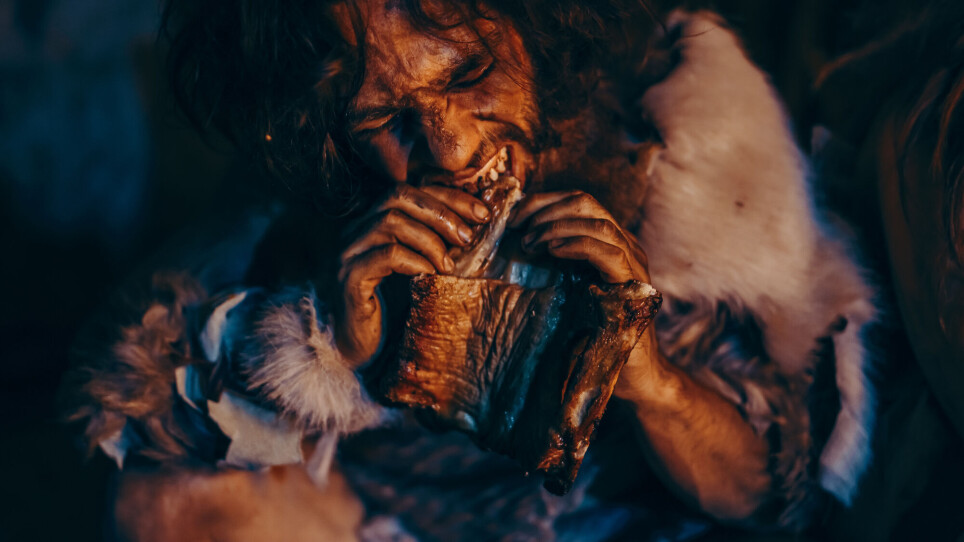THIS ARTICLE/PRESS RELEASE IS PAID FOR AND PRESENTED BY the Norwegian University of Life Sciences (NMBU) - read more

Researchers believe a genetic variant can protect against malnutrition
A new study has found that a variant of a specific growth hormone gene may have protected Neanderthals against malnutrition during periods of food scarcity. The researchers behind the study believe that the gene variant may explain why some people handle malnutrition better than others.
In a new study, published in Science Advances, researchers have taken a closer look at a specific gene that they believe can make people better at handling periods of food scarcity.
Growth hormone receptors are found in the outer membrane of many cells in the body. When a growth hormone binds with a growth hormone receptor, this stimulates growth and cell division. This process is evident in growing children, or when your muscles expand after working out.
There are two variants of the growth hormone receptor gene. One variant is called GHRd3. Researchers have recently discovered that Neanderthals also had this genetic variant.

“We thought we might find something interesting there that could tell us something about the evolutionary history of humans,” says Marie Saitou, researcher at the Centre for Integrative Genetics at the Norwegian University of Life Sciences (NMBU) and first author of the study.
How did the two variants of the gene come about? And what advantages and disadvantages may have been linked to the different variants?
The variant that disappeared
According to Saitou, GHRd3 was probably the dominant genetic variant in Neanderthals and Denisovans – the forerunners of modern humans. This changed around 50,000 years ago, and the gene variant gradually became less and less common. In the East Asian population studied by the researchers, the estimated proportion of the population with this gene variant decreased from around 85% around 30,000 years ago to approximately 15% today.
“All early human species probably had the GHRd3 variant. Then something happened after the divergence of Neanderthals and modern humans,” says Saitou.
“The question is thus: Why did this genetic variant become less and less common in humans? Could it be that this genetic variant gave early human populations an evolutionary advantage that no longer existed.”
According to Saitou, the answer may be that GHRd3 had a protective function against malnutrition. This is evidenced by the fact that the GHRd3 variant became less common at the same time as the way we gathered and prepared food changed.
“This point in history, around 30,000 years ago, probably marks the start of modern culture. This was also when people started to prepare food differently. Our hypothesis is that this meant more stable access to food than before,” she says.
“We thus believe that this variant may have been useful during a period when access to resources was more unstable than it is today.”
Effect on mice and men
The researchers conducted trials on mice to test their hypothesis. The researchers studied mice that either had the modern or the archaic genetic variant and were thus able to compare how the different GHRd3 variants reacted to a low-calorie diet compared to a normal diet.
The development of the two groups of mice was roughly similar on a normal diet. However, the development of the groups differed when the mice were given a low-calorie diet. The male mice with the archaic variant were much smaller than the other males, and ended up being roughly as small as the female mice.
“We believe this may have had a protective effect. Being small may be advantageous during periods of limited access to nutrition,” says Saitou.
To study whether they could find the same effect in people, the researchers studied 176 Malawian children with severe malnutrition. They saw that the children who had the genetic variant GHRd3 had milder symptoms of severe malnutrition than the other children.
“So in brief, we found that the effect of a specific gene variant can depend on gender and environmental factors. The approach we used – a combination of statistical genomics and experiments – can be used to understand how living and extinct species have adapted to their environment,” says Saitou.
Reference:
Marie Saitou et.al.: Sex-specific phenotypic effects and evolutionary history of an ancient polymorphic deletion of the human growth hormone receptor. Science Advances, 2021.
———
Read the Norwegian version of this article at forskning.no
See more content from NMBU:
-
Shopping centres contribute to better health and quality of life
-
We're eating more cashew nuts – and the consequences are serious
-
Do young people with immigrant parents have better health?
-
Who’s picking your strawberries this summer?
-
Can coffee grounds and eggshells be turned into fuel?
-
Rising housing costs fuel inequality in Norway





































